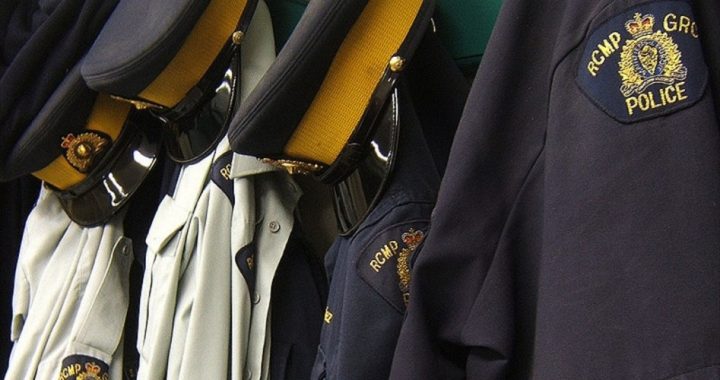
A Royal Canadian Mounted Police (RCMP) spokesman told reporters in Toronto on April 22 that the RCMP had arrested and charged two men with plotting to derail a Toronto-area passenger train. The police said the plot was backed by al-Qaeda elements in Iran.
“Had this plot been carried out, it would have resulted in innocent people being killed or seriously injured,” said the RCMP official, James Malizia.
The RCMP identified the suspects as Chiheb Esseghaier, 30, of Montreal, and Raed Jaser, 35, of Toronto, reported Reuters. Though neither man is a Canadian citizen, the police did not reveal their nationalities. Police were quick to note that the plot was not linked to the Boston Marathon bombings.
An article about the plot in the Globe and Mail (Canada’s largest-circulation national newspaper) reported that the initial investigation into the plot began when a Muslim imam phoned in a tip to the Canadian Security Intelligence Service and RCMP.
“More than a year ago, a client of mine, an imam in the Toronto Muslim community, became concerned after noticing the activities of one of the individuals now under arrest,” Toronto lawyer Naseer Syed told the Globe and Mail.
Because he became alarmed by Jaser’s “attempts to approach young Muslims,” the imam “took the initiative to notify the authorities,” Syed said.
The Canadian newspaper noted that police detectives asserted the pair of suspects relied on “direction and guidance” from al-Qaeda-affiliated terrorists in Iran as they plotted carnage in Canada. “This is the first known al-Qaida planned attack that we’ve experienced in Canada,” Police Superintendent Doug Best said at a news conference.
Shortly before police officials held the news conference at which they announced the details of the plot, they invited about 20 leaders of Toronto’s Islamic community to a meeting. Hussein Hamdani, a Muslim lawyer who was invited to the pre-briefing, said the police used the meeting as an opportunity to acknowledge the helping hand of those who had provided them with valuable information: “The first comment they made, and they encouraged us to make it a talking point, is that, but for the Muslim community’s intervention, we may not have had the success we’ve had.”
The Globe and Mail reported what was known about the backgrounds of the two suspects. Esseghaier was born in Tunis and came to Canada in the summer of 2010, telling his landlord that he was studying at the University of Sherbrooke, Quebec. He moved to Montreal in November of that year to enroll at the Institut National de la Recherche Scientifique (INRS).
Julie Martineau, the INRS’s director of communications, said Esseghaier was about midway through earning his doctorate in nanotechnology. “He is doing a PhD in the field of energy and materials sciences,” Martineau told Reuters. “He was discreet,” one researcher who had known Esseghaier told the press, “But nothing he did seemed suspicious. He seemed like an ordinary guy.”
The Globe and Mail reported that little was known about Jaser, though he and his wife, described as always wearing black from head to toe, kept their blinds closed at all times. True-to-form of suspects in high profile terrorism or assassination cases, Jaser’s neighbor, Sanjay Chaudhary, described the couple as quiet: “They were kind of reserved, I think. I never saw him talking to anybody except his [landlord],” said Chaudhary. “Even if I am starting my car and he is starting his car, even then he would never say hi, hello. Never. We never had any conversation.”
An AP reporter questioned Bruce Riedel, described as a CIA veteran who is now a Brookings Institution senior fellow, about known connections between al-Qaeda and Iran. Riedel said that al-Qaeda has had a clandestine presence in Iran since at least 2001 but neither the terror group nor the Iranian government speaks openly about it.
“The Iranian regime kept some of these elements under house arrest,” he said in an e-mail to the Associated Press. “Some probably operate covertly. AQ members often transit Iran traveling between hideouts in Pakistan and Iraq.”
Alireza Miryousefi, the spokesman for the Iranian mission to the United Nations, claimed that al-Qaeda was not operating in Iran.
“Iran’s position against this group is very clear and well known. [Al-Qaeda] has no possibility to do any activity inside Iran or conduct any operation abroad from Iran’s territory,” Miryousefi said in a statement e-mailed to the AP on April 22. “We reject strongly and categorically any connection to this story.”
Reuters cited statements from both U.S. and Canadian authorities about which train routes the alleged plotters had kept under surveillance, with U.S. officials stating that the attack would have targeted a rail line between New York and Toronto, and Canadian police saying only that the plot involved a VIA train route in the Toronto area. The Globe and Mail reported that the pot had targeted a VIA passenger train on the Canadian leg of its Toronto-New York route. VIA Rail Canada operates the national passenger rail service on behalf of the government of Canada.
U.S. Rep. Peter King (R-N.Y.) praised Canadian authorities for the arrests, and said that the attack was intended “to cause significant loss of human life including New Yorkers.”
An article in the Los Angeles Times on April 22 cited statements from several people regarded as foreign affairs experts concerning their views on the likelihood of a connection between al-Qaeda and the Iranian government.
“It frankly doesn’t compute for me,” said Barbara Slavin, a senior fellow at the Atlantic Council. “If there is any link, I would think it was extremely tangential.” The report summaries Slavin’s reasoning as follows:
Iran and Al Qaeda have frequently had chilly relations, according to Slavin and other experts. Iran is majority Shiite, while Al Qaeda is firmly Sunni. In Syria, Al Qaeda has jumped into the fray alongside opposition fighters while Iran has backed President Bashar Assad. Iran has also held Al Qaeda members in the country under house arrest, monitoring their activities. Documents confiscated from Osama bin Laden’s hide-out in Pakistan and released last year suggested discord between the two.
The Times also quoted Rick “Ozzie” Nelson, a former U.S. counter-terrorism official and a senior affiliate at the Center for Strategic and International Studies. Nelson said that even if Iran and Al Qaeda share some of the same enemies, “it’s not like Iranians are going to allow a Sunni terrorist group to plan an attack that might result in more hostilities against the Shiite nation of Iran.”
A dissenting opinion was offered by Rand Corporation senior political scientist Seth G. Jones, who wrote an article for Foreign Affairs (the official magazine of the Council on Foreign Relations) from which the Times quoted:
“Iran appears willing to expand its limited relationship with Al Qaeda,” wrote Jones, who believes that while al-Qaeda would most likely reject any direction from Iran, “any support or tentative permission to plot on Iran’s soil would be helpful.”
The Times also paraphrased a statement from Jeffrey M. Bale, a senior researcher at the Monterey Institute of International Studies, who said that Iran is not a monolith and different parts of its military and clerical establishment might weigh working with al-Qaeda differently.
Although Canada did an excellent job in this case of stemming a possibly horrendous plot, it does highlight the downside of weakening borders between Canada and the United States (as well as Mexico) and replacing national border security with a continent-wide security perimeter that would surround all three nations. Such a perimeter agreement, called the Security and Prosperity Partnership (SPP) of North America, was first formally proposed at a tri-party summit held in Waco, Texas, on March 23, 2005 by Canadian Prime Minister Paul Martin, Mexican President Vicente Fox, and U.S. President George W. Bush.
Though efforts to create the SPP have stalled, the idea is far from dead. President Obama hosted Mexican President Felipe Calderón and Canadian Prime Minister Stephen Harper in Washington, D.C., last year for the so-called “North American Leaders Summit,” announcing further integration of the three governments.
A month before the meeting of the three heads of government, in March 2012, the “inaugural trilateral meeting” of North American defense ministers was held in Ottawa, Canada, attended by Canada’s Minister of National Defense Peter MacKay, Mexican Secretary of National Defense General Guillermo Galvan, and Mexican Secretary of the Navy Admiral Mariano Mendoza, along with U.S. Secretary of Defense Leon Panetta.
Following the inaugural meeting, Defense Secretary Panetta stated, “This is the first trilateral meeting of defense ministers from the United States, Canada and Mexico … [providing] an unprecedented opportunity to try to bring together our nations in a common approach to continental security.” (Emphasis added.)
Defenders of U.S. national sovereignty, as well as those concerned about maintaining secure borders, are justifiably wary of anything that will weaken the line of defense against terrorism that secure borders represent.
The Canadian train plot demonstrates that terrorism is an international threat and that cross-border cooperation is essential, but also confirms the necessity of secure national borders.
Related articles:
North American Union Moves Closer After Trilateral Summit
WikiLeaks Confirms North American Integration Scheme
U.S. Defense Department Announces Step Toward the North American Union
Defense Boss Panetta Touts “North America” After Canada Meetings
Obama to Host North American Summit on “Security,” Global Warming
Mexican Drug Trafficker Says He Worked With Feds



